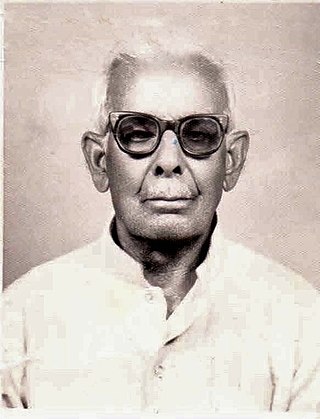
Richard Dixon Oldham FRS was a British geologist who made the first clear identification of the separate arrivals of P-waves, S-waves and surface waves on seismograms and the first clear evidence that the Earth has a central core.

Porbandarpronunciation (help·info) is a city in the Indian state of Gujarat, perhaps best known for being the birthplace of Mahatma Gandhi and Sudama. It is the administrative center of the Porbandar District and it was the former capital of the Porbandar princely state.

The Imperial Order of the Crown of India is an order in the British honours system. The Order was established by Queen Victoria when she became Empress of India in 1878. The Order was open only to women, and no appointments have been made since the Partition of India in 1947. The Order was limited to British princesses, wives or female relatives of Indian princes and the wife or female relatives of any person who held the office of:

Saurashtra, also known as Kathiawar, is a peninsular region of Gujarat, India, located on the Arabian Sea coast. It covers about a third of Gujarat state, notably 11 districts of Gujarat, including Rajkot District. It was formerly a state of India before it merged with Bombay state. In 1961 it separated from Bombay and joined Gujarat.

Thomas Abel Brimage Spratt was an English vice-admiral, hydrographer, and geologist.

The Bombay Presidency or Bombay Province, also called Bombay and Sind (1843–1936), was an administrative subdivision (province) of British India, with its capital in the city that came up over the seven islands of Bombay. The first mainland territory was acquired in the Konkan region with the Treaty of Bassein (1802). Mahabaleswar was the summer capital.

Wazir Mansion, officially known as Quaid-e-Azam Birthplace Museum is a former family home in the Kharadar district South at Karachi, Sindh, Pakistan which is considered the birthplace of the country's founder, Muhammad Ali Jinnah.

Porbandar district is one of the 33 districts of Gujarat state in western India. The district covers an area of 2,316 km2. It had a population of 5.85,449 of which 48.77% were urban as of 2011 census This district was carved out of Junagadh District. It lies on the Kathiawar peninsula. Porbandar city is the administrative headquarters of this district. This district is surrounded by Jamnagar district and Devboomi Dwarka to the north, Junagadh district and Rajkot district to the east and the Arabian Sea to the west and south.
Adityana is a census town in Porbandar district in the India in state of Gujarat. It is located near Barda hills.

In February 1948, the princely state of Junagadh, located in what is now the Indian state of Gujarat, was annexed to the Union of India after a dispute with the Dominion of Pakistan, regarding its accession, and a plebiscite.

Dada Amir Haider Khan was a communist activist of Pakistan, and revolutionary during the Indian independence movement.
Gwebin is a village in Mogok Township, Pyin Oo Lwin District, in the Mandalay Region of central Burma. It is located 16 miles (26 km) west of Mogok. A track connects it to Shwenyaungbin and Mogok.

Palitana was a princely state in India during the British Raj until 1948. The center was the city of Palitana. The last ruler of the state received a privy purse of 180,000 Rupees at the state's accession to independent India on 15 February 1948.

Porbandar State was a princely state during the British Raj ruled by Jethwa dynasty. It was one of the few princely states with a coastline.
Charles Stewart Middlemiss FRS was a British geologist who worked in British India and the Princely States.
Captain H.H. Maharana Raj Shri Sir Amarsinhji Banesinhji Sahib was the last Maharana Raj Sahib of Wankaner belonging to Jhala dynasty, who ascended the throne of princely state of Wankaner on 12 June 1881 and ruled until his state was merged into India on 15 February 1948. He continued to be officially Maharana Sahib of Wankaner till his death on 28 June 1954.
Jethwa dynasty was a dynasty that ruled over present day Gujarat region of India from 7th century AD till middle of 20th century, when India became independent. It was a Rajput dynasty ruled by Jethwa clan of Rajputs.

Kathiawar is a peninsula which today forms part of the Indian state of Gujarat. The peninsula covers an area of 23,345 sq. miles and in 1901 had a population of 2,645,805.

William King FGS was the son of the English born geologist William King who also became a geologist and worked in India with the Geological Survey of India, serving as its director from 1887 to 1894.

Emmanuel Church in Grant Road, Mumbai, India is affiliated to the Church of North India and was built in 1869. The building, constructed in Gothic Revival style, is a Grade II heritage structure and was made using Porbandar stone. It was the first church with an Indian congregation to follow the British Church Mission Society (CMS), and though it now falls under the Church of North India, the parishioners still maintain Anglican practices. It was established by Revd. T. K. Weatherhead of the CMS.















